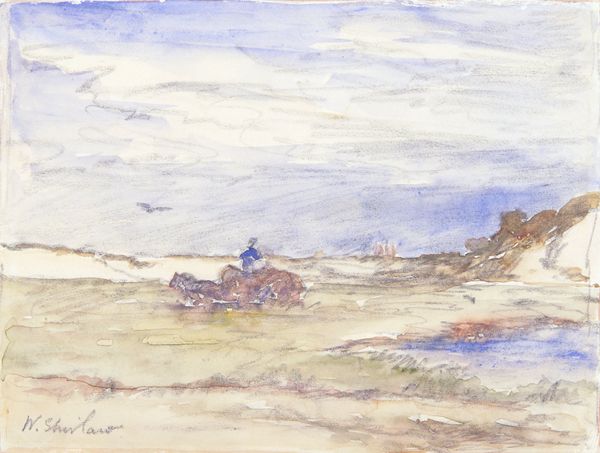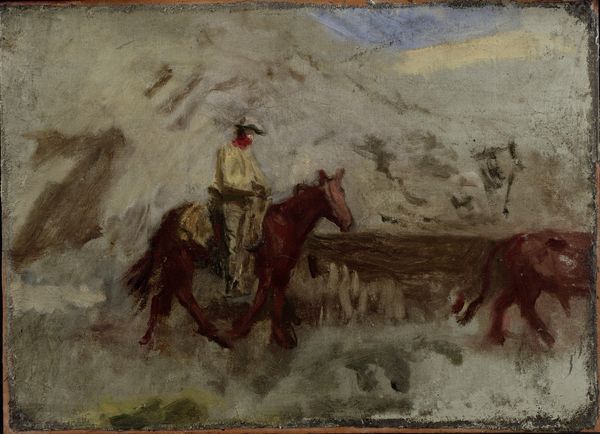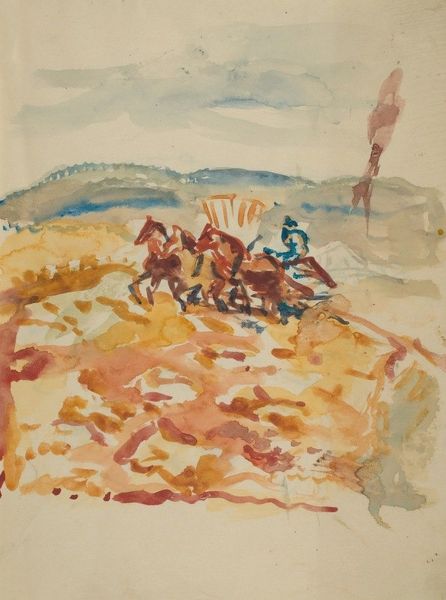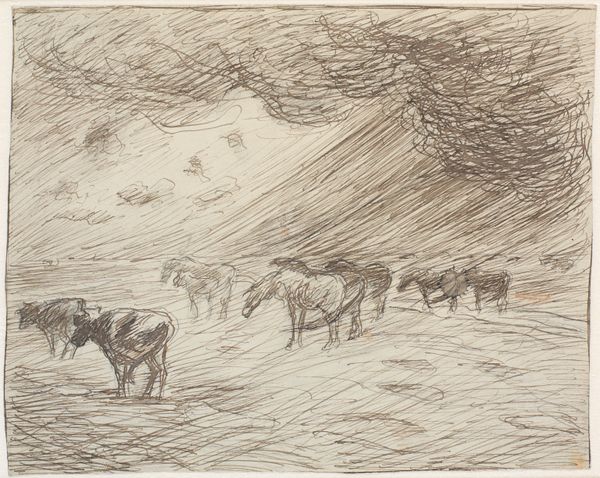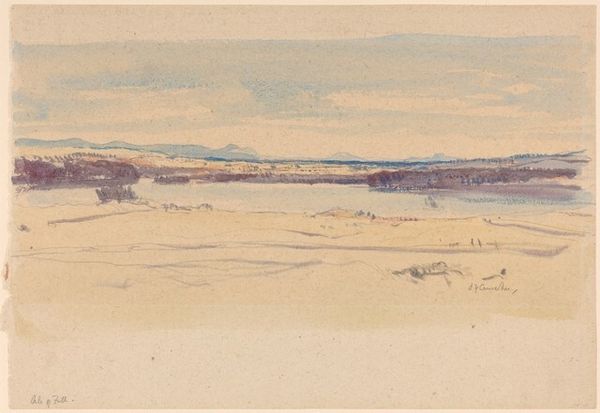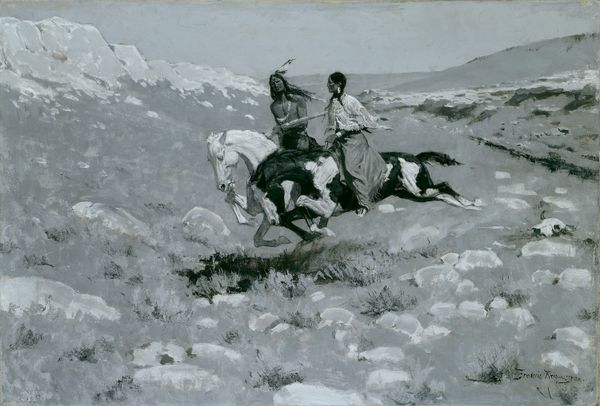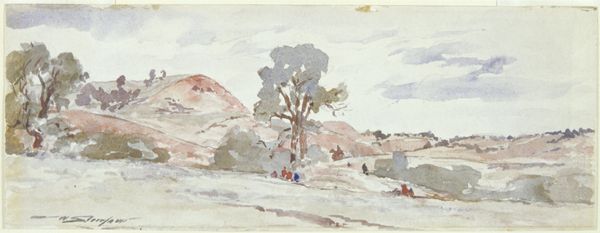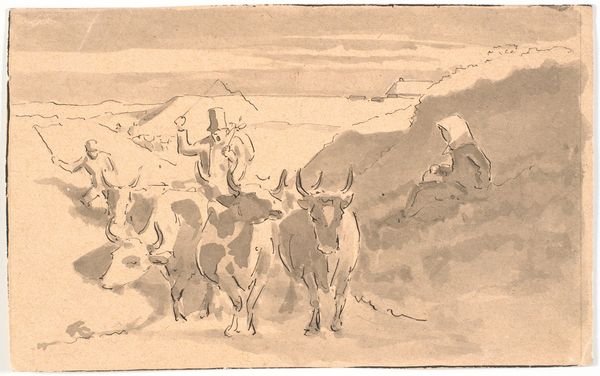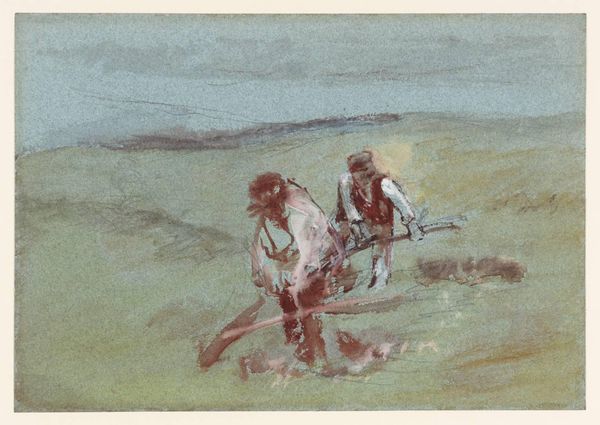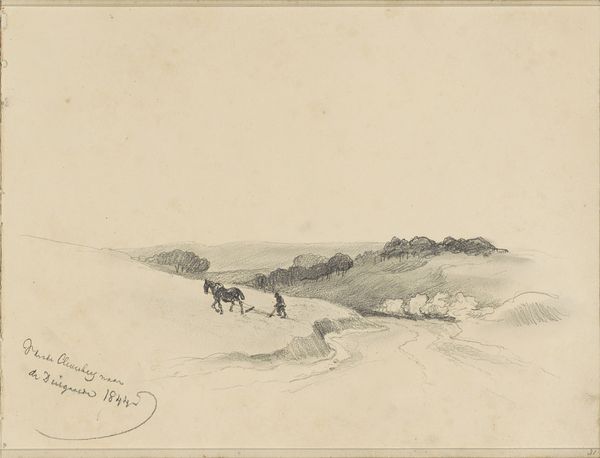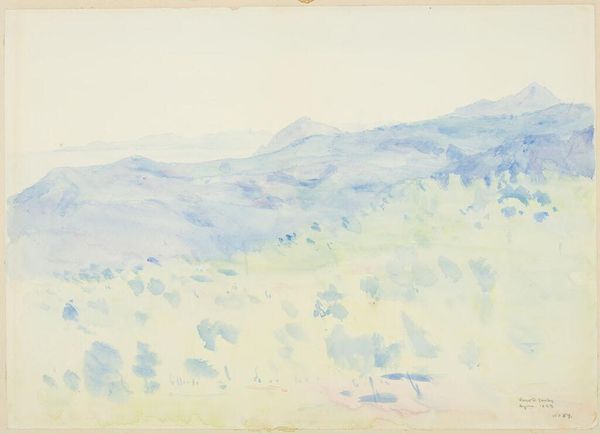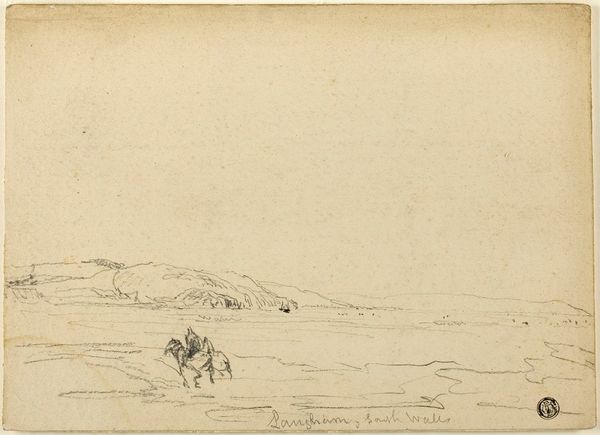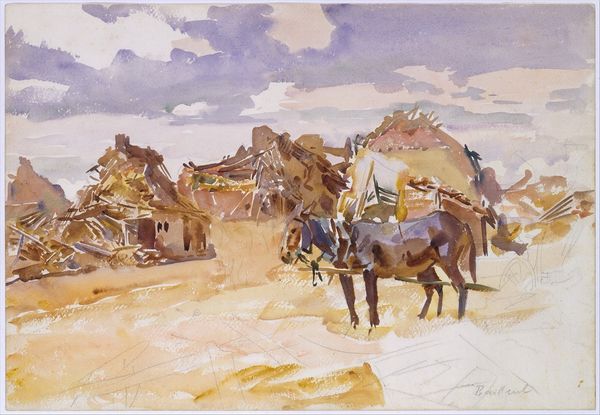
drawing, paper
#
drawing
#
water colours
#
landscape
#
paper
Dimensions: 4 1/4 x 13 1/2in. (10.8 x 34.3cm)
Copyright: Public Domain
Curator: Looking at Walter Shirlaw’s "Montana Indian Reservation II," created circa the 19th century, housed right here at the Minneapolis Institute of Art, what's your immediate take? Editor: A dream. It's soft and melancholic, almost a faded photograph. The colors feel bleached, giving a sense of distance, both geographical and temporal. What strikes me most is the tranquility. Curator: Yes, the watercolor technique lends itself to that atmosphere. The light washes and subtle gradations across the paper evoke a hazy, almost ethereal quality. Notice the composition; the horizontal format emphasizes the vastness of the landscape, segmented into foreground, middle ground with those tethered horses, and distant hills. The perspective isn’t sharply defined, creating a flattening effect, drawing attention to the surface of the work itself. Editor: Those horses feel like weary travelers, silhouetted against the expansive, empty landscape. The almost casual way they're rendered--are they at rest or just standing stock-still from sheer exhaustion? Curator: Shirlaw, deeply rooted in the traditions of realism, was particularly drawn to scenes reflecting everyday American life. We see that reflected in his interest in portraying not only the landscape, but also the inhabitants and their environment with observational accuracy. Editor: But it doesn’t romanticize the reservation. There's a muted realism in the subdued palette; there are no dramatic vistas here, just muted browns and blues, giving an unvarnished view. The absence of people, of course, is notable. The entire mood, as it strikes me now, embodies a silent displacement, don’t you think? Curator: The choice of watercolor indeed creates this impression. He employed the transparency of the medium to build layers, each informing the last, giving an honest, unassuming face of an indigenous American reservation landscape of the 19th century. Editor: Considering the history, what stays with me is the feeling of hushed anticipation – like waiting for something momentous or maybe something dreadful to happen. Shirlaw has certainly left plenty for us to consider beyond the purely representational. Curator: Indeed. It is a potent reminder that behind the simple depiction, historical artworks frequently open up avenues for understanding broader themes and questions relevant to society as a whole.
Comments
No comments
Be the first to comment and join the conversation on the ultimate creative platform.
